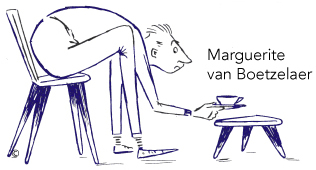Health & Fitness
Jin Shin Jyutsu
Alix Miller discovers this gentle art of harmonising the body’s energy
As one of life’s fidgets, lying still for any length of time is a challenge for me. If I’m not playing with my hair, I’m ripping skin from my long-suffering fingers or nibbling my nails. It’s no wonder I’m an insomniac and that my surplus of nervous energy often manifests itself as anxiety and panic attacks. So I had mixed feelings about a session of Jin Shin Jyutsu, which involves an hour of horizontal stillness.
I met Marguerite van Boetzelaer, one of the few UK practitioners of this ancient Japanese art, at London’s The Hale Clinic. In simple terms, Jin Shin Jyutsu is ‘a way of harmonising the body’s energies to achieve happiness, benevolence and longevity. It’s said to be a powerful tool in helping to overcome discomfort, disharmony and disease, be it physical, emotional or mental. It’s also non-invasive – practitioners place their fingertips, over clothes, on energy locks in the body to harmonise energy flow.
After a brief chat about my health, I lay down. There are two diagnostic measures used: noting how the person lies, stands and holds themselves, and taking the pulse Chinese-style (from both wrists at once). In my case, van Boetzelaer deduced from the way I was lying that I sometimes suffer from lower back pain.
‘I feel slight stress and anxiety in your pulse, lots going on in your upper body and a very busy mind,’ she also revealed. ‘I’m going to work on redirecting your energy flow downwards, working on the body’s 26 energy “locks”. ‘She started by pressing with one hand under my lower back and one under my knee for about 10 minutes. She moved to my ankle and then under my ribcage, where she pressed a specific rib before finishing off with my collarbone. The sensation was more tender in some places than others, although the pressure she used was the same throughout. some people experience tingling, hot, cold or twitching muscles during the session.
Afterwards I felt profoundly relaxed and was able to maintain my sense of calm for a few days. I can’t say whether Jin Shin Jyutsu has cured my insomnia, but it felt as beneficial as a few sessions of yoga… and without the effort!
HISTORY
The ancient art of Jin Shin Jyutsu is said to have been revived by Jiro Murai in Japan in the early 1900s. He used it to clear himself of a life-threatening illness, then devoted his life to developing the art. He passed on his wisdom to his student, Mary Burtmeister, who took it to the US and developed it even further over 20 years.
EVIDENCE
anecdotal evidence suggests it’s effective in treating a range of health complaints, though no clinical studies have been done. ‘It worked for me’ Glen allen, 59, started Jin Shin Jyutsu treatment nearly two years ago to treat the symptoms of Parkinson’s disease.’ I can’t recommend it highly enough.’ she says. ‘It helps with my balance and flexibility- I noticed improvements after just one session. I also suffer from constipation, which Jin Shin Jyutsu can treat. Parkinson’s has made my speech slurred and tightened my muscles, but the treatment has improved this so much that people have commented on the difference it has made.’
WHO SHOULD USE IT?
Anyone suffering from back and neck problems, headaches, sciatica, nausea, constipation, insomnia, anxiety, panic, circulation and digestive complaints, and those wishing to lose weight. Also those just seeking a form of relaxation. It can be used alongside conventional medicine. CONTRADICTIONS
None. As the therapy is gentle and non-invasive, it’s suitable for everyone.

